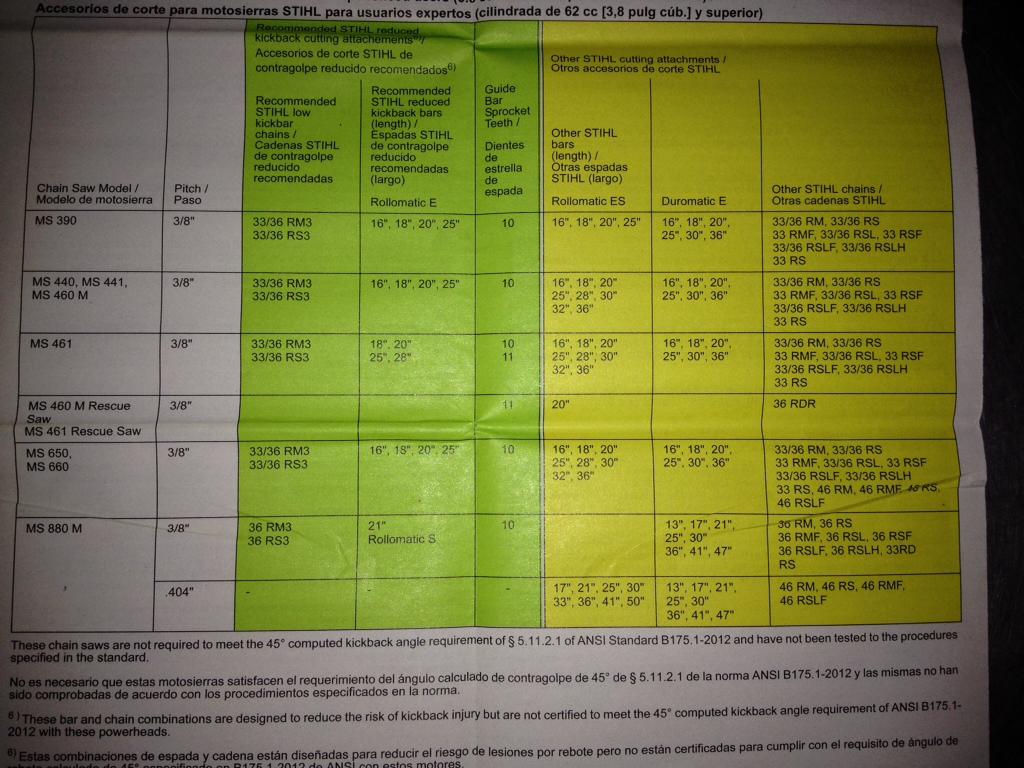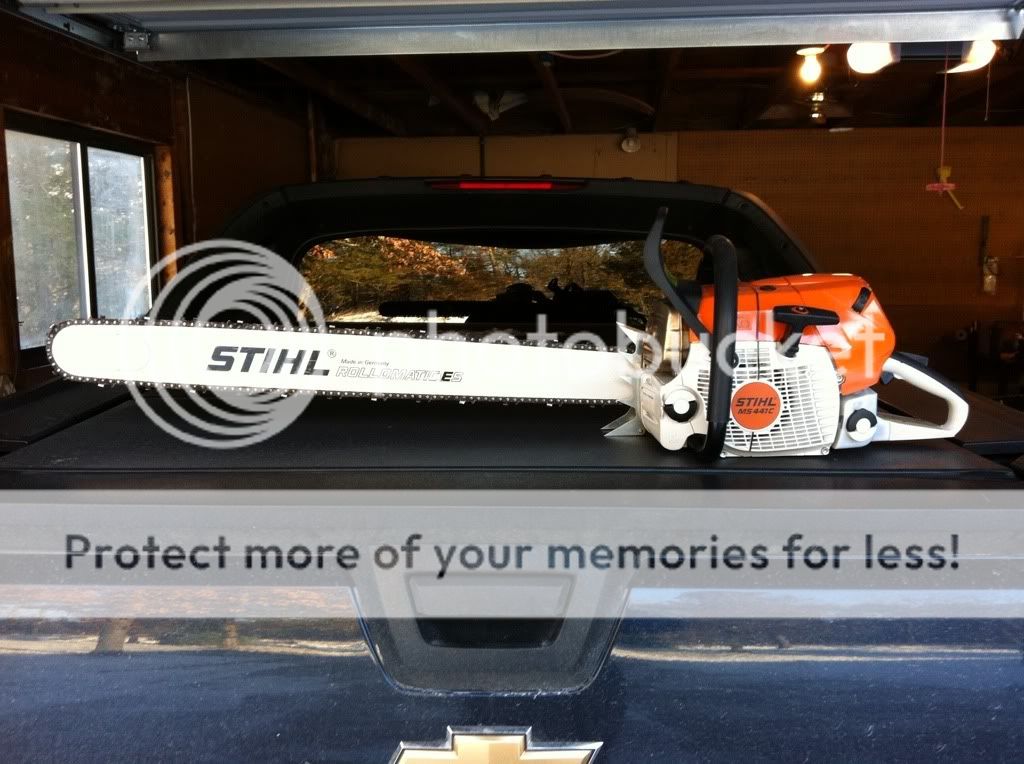striderzz
ArboristSite Lurker
Here's what happened:
When I purchased my MS 460 I bought 25" Stihl bar to go with it. The label on the bar listed the MS 461 but NOT the MS 460. I ask the dealer about it and he said it didn't matter, it was a typo (my wording, not his). The shop was out of 28" bars, 32" I already had and 20" was too small. I decided to believe him and bought the bar.
Fast forward to now. I bought a new 25" chain from a different dealer the other day. When I opened the package a Stihl pamphlet fell out that I had never seen before that is titled "Bar and Chain Information". On it is a chart of bars that work with various saws and I noticed that the MS 460 had only (1) 25" bar listed with 10 teeth. The MS 461 had (2) 25" bars listed with 10 & 11 teeth respectively.
I counted the teeth on my bar and it is 11. So what does this mean? I understand what happens with the drive sprocket when you go from 7 pin to 8 pin (chain spins faster) but what happens when the bar sprocket teeth increase?
Thanks for educating the ignorant.
-n
When I purchased my MS 460 I bought 25" Stihl bar to go with it. The label on the bar listed the MS 461 but NOT the MS 460. I ask the dealer about it and he said it didn't matter, it was a typo (my wording, not his). The shop was out of 28" bars, 32" I already had and 20" was too small. I decided to believe him and bought the bar.
Fast forward to now. I bought a new 25" chain from a different dealer the other day. When I opened the package a Stihl pamphlet fell out that I had never seen before that is titled "Bar and Chain Information". On it is a chart of bars that work with various saws and I noticed that the MS 460 had only (1) 25" bar listed with 10 teeth. The MS 461 had (2) 25" bars listed with 10 & 11 teeth respectively.
I counted the teeth on my bar and it is 11. So what does this mean? I understand what happens with the drive sprocket when you go from 7 pin to 8 pin (chain spins faster) but what happens when the bar sprocket teeth increase?
Thanks for educating the ignorant.
-n






